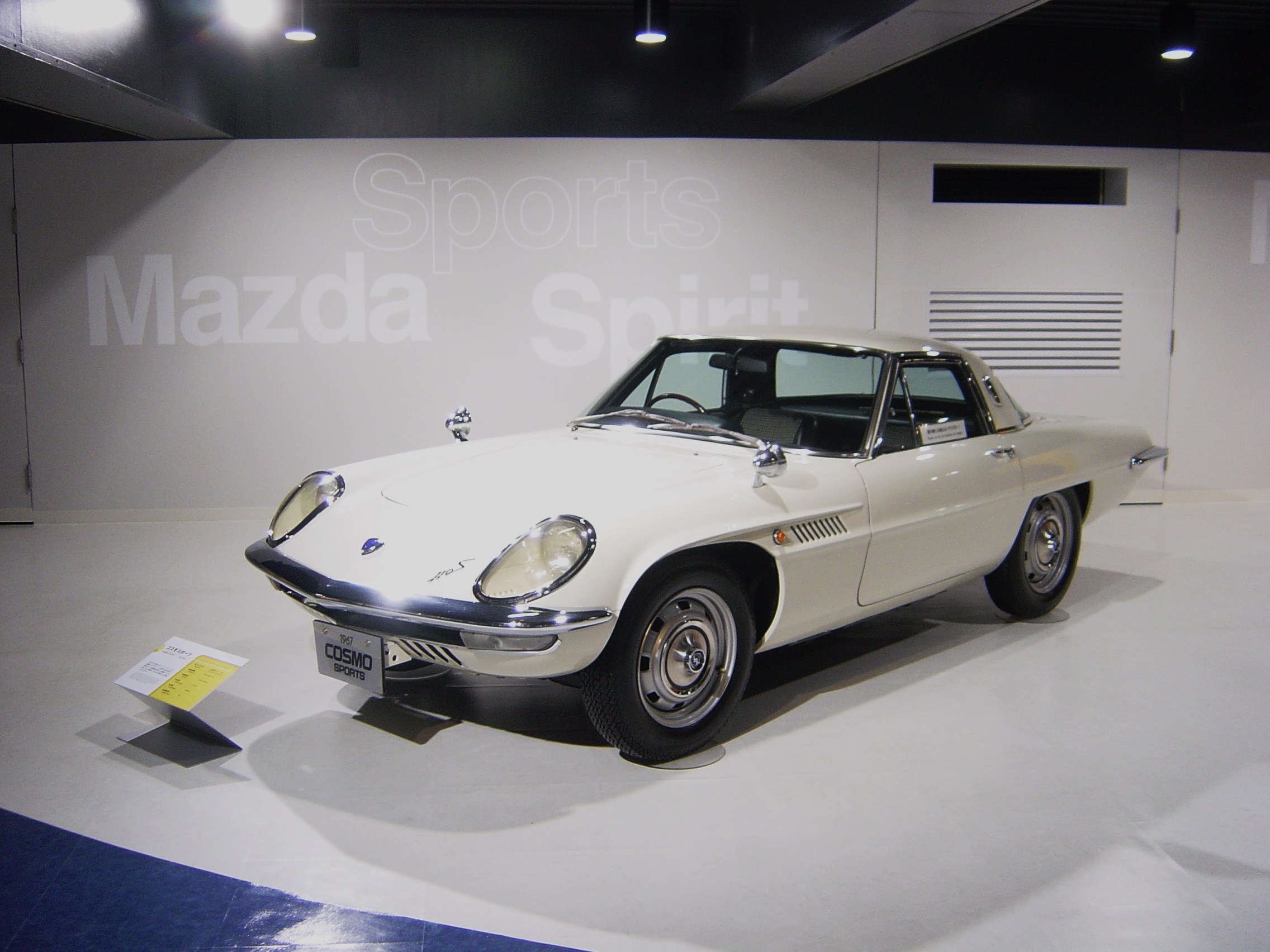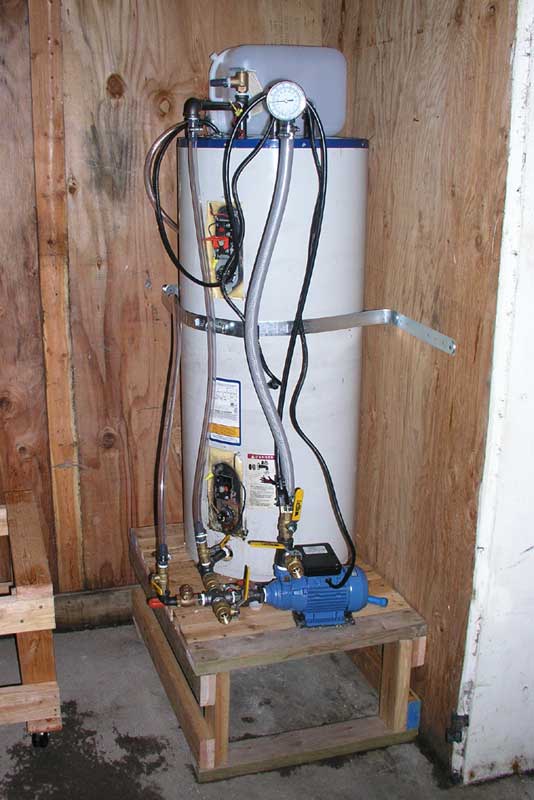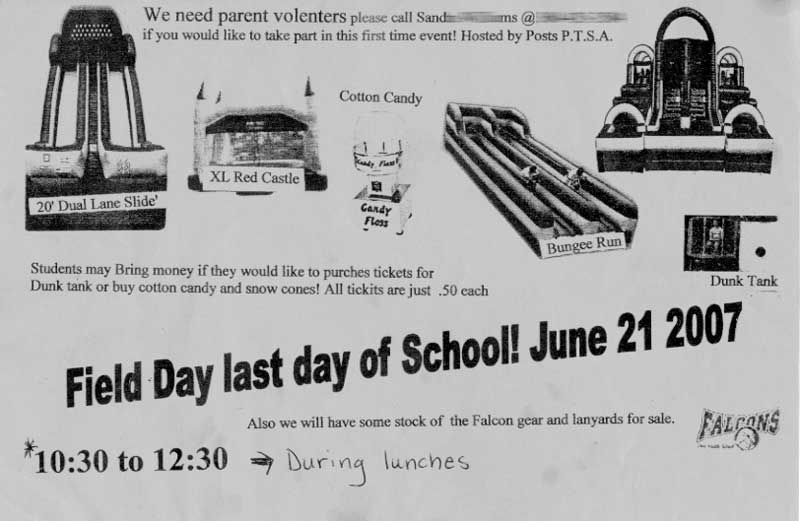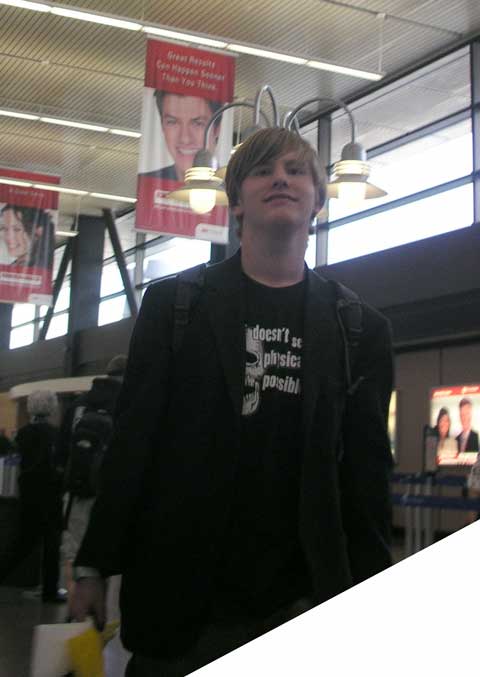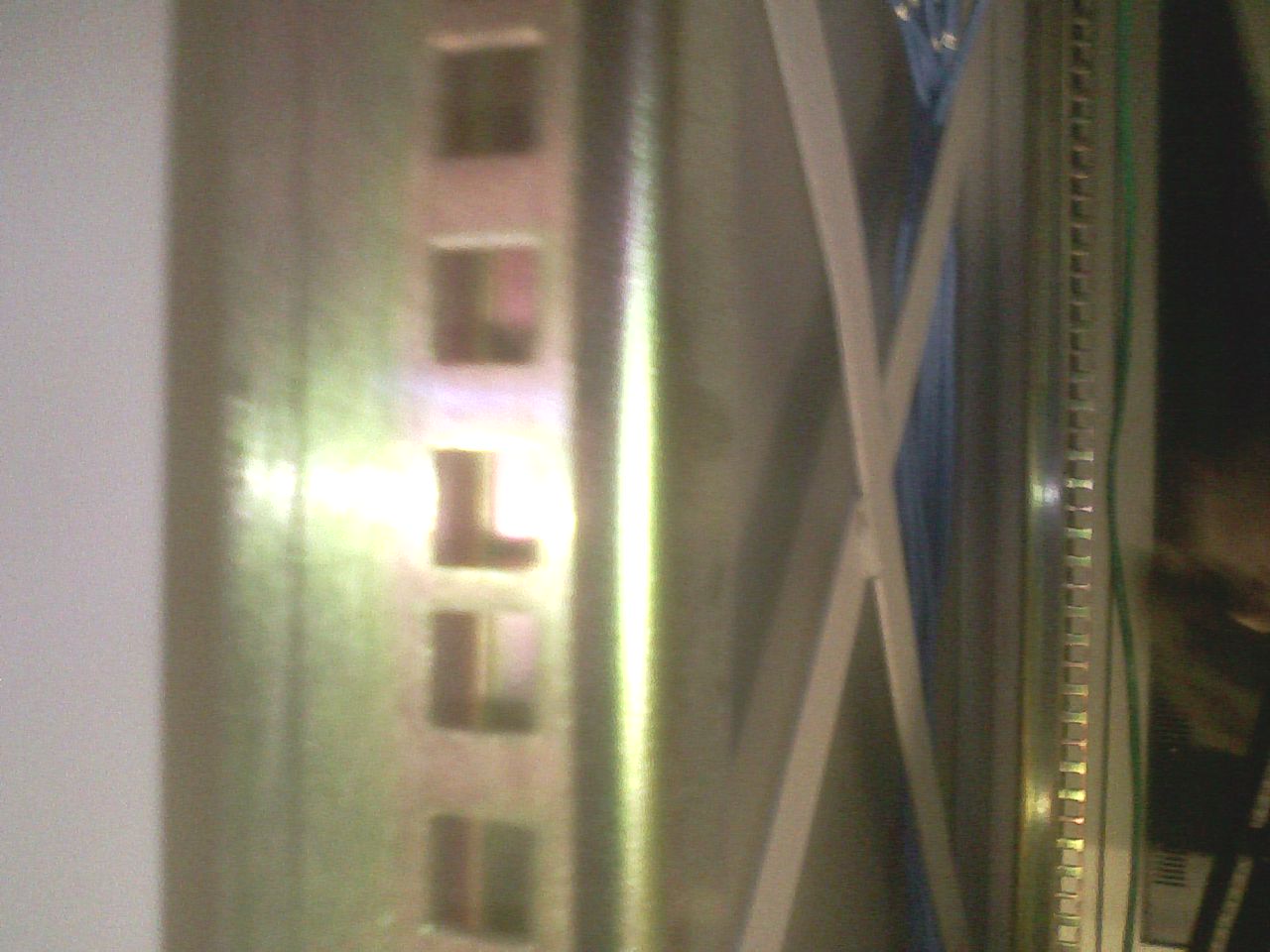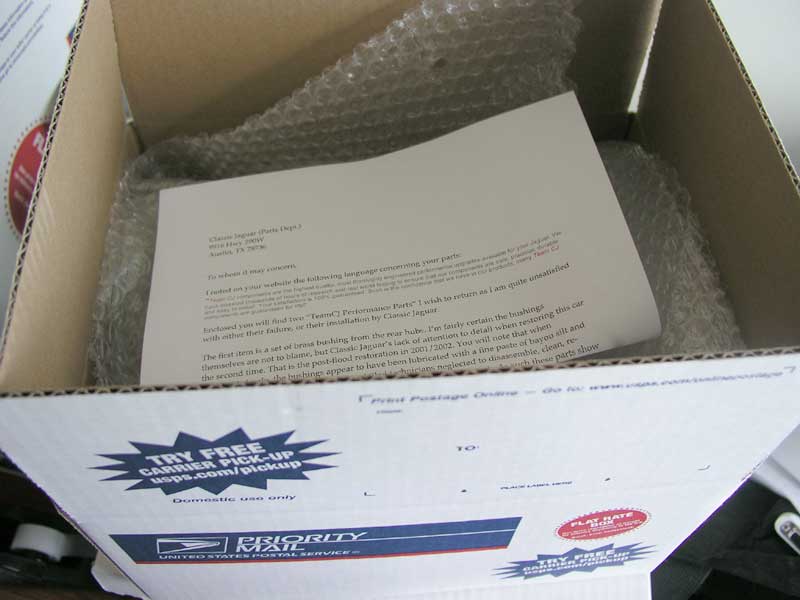
I’ve read a lot of articles on the Internet about avoiding speeding tickets. These have frequently been linked from Digg.com, as they seem addicted to “how to…” type articles. (I genuinely hope I don’t get linked by digg, mostly because my images are being hosted by an aging server. 😉 ) Most of these “how to avoid speeding tickets” articles play it safe and say “run with the pack” and/or “don’t exceed the limit by more than 5mph” or similar simple solutions. I’m sorry, but advice like that is… as my friend Jeff would say… “A big no-shi**er!” How about some advice for the serious lead-foot? Well here it is:

First off: The Disclaimers
If you follow this advice and get a ticket, have a wreck, kill somebody, whatever… it is YOUR fault, not mine. If you haven’t had any driver training other than “Driver’s Ed” in High School, don’t use any of this advice. If you haven’t taken a high-performance driving course, or spent time on a track, don’t drive near your personal skill limits on a public road. If you don’t know the limits of your car’s performance envelope, don’t push them on a public road. If your car is not well maintained, don’t push it on a public road. Know the condition of your tires, they are the most important part of your car’s ability to go, stop, and turn properly. Check your air pressure regularly.
Use good judgement at all times.

Priority: Don’t Get Caught.
1. Get a good radar detector.
The police have made this electronic warfare, you need to be armed. Don’t bother with those little battery powered beepers… get a REAL detector/locater. I use a Valentine One. Yes, it is expensive, but worth every penny. Mine has paid for itself many times over.
A good detector will alert you to what is happening out there. A REALLY good one will be able to tell you a LOT about your surroundings. Get one and learn to use it.
Mine makes noises and lights lights, and 90% of the time I can safely ignore it, but once in a while it speaks to me and I listen. Sometimes it demands my attention and requires immediate action. It has even stopped me from getting tickets when I have been caught… more on that later.
Law enforcement uses several types of speed measuring devices, from radar to “laser” (light based tools) and low-tech systems such as observation aircraft and pacing. Patrol cars in motion (especially the unmarked ones) seem to use K-band radar, and a good detector will pick these up well over a mile away. I have never, ever been stopped by K-band. Motorcycle cops and occasionally police cruisers will use Ka-band radar. They are usually “point & shoot” devices, where the officer aims at the car he wants to measure and invokes the device. With a good detector you will be hinted by the officer’s early targets before he selects you. You may not get much warning, especially if the officer is around a curve or hill.
A detector won’t help you with aircraft and pacing. For that you’ll need to…

2. PAY ATTENTION!
When you are driving, you are propelling a multi-thousand pound hunk of steel, glass, rubber, and plastic down the road at lethal speeds… you really should be paying attention to what you are doing. This means no cell phones, no eating, no satellite navigation systems, no text messaging, nothing that distracts your attention from the act of driving. Your eyes are the most vital driving tool you have. Put them to use scanning the road, the cars around you, the overall environment. Don’t just passively look out the window, actively SEE what is happening outside. Don’t let yourself be visually distracted by things inside the car.
There are times I feel like I’m the only guy on the freeway that is seeing what is going on. You should always know:
- Your current speed
- Your car’s condition, fuel, temps, etc
- Traffic around you
- Your current speed
- The road ahead of you
- Traffic way ahead of you (see #6 below)
- Objects in your mirrors
- Weather conditions, wind direction, precipitation, etc
- Your current speed
- The attention levels of the drivers around you (cell phone to their head?)
- Potential spots for cops ahead
- Your current speed
Did I mention your current speed, that plays an important role later…
Paying attention will help you spot things that could lead to a ticket. Patrol cars parked up ahead on an overpass. Motorcycles in the median. Aircraft doing lazy circles over the road miles ahead. Unmarked cars… usually Fords or Chevrolets with suspiciously nondescript exteriors, steel wheels, no “my kid is an honor student” bumper stickers, no plate frame with a dealer name on it, etc, and overly clean-cut drivers.
Paying attention is also the best way to avoid accidents. Keep your eyes open folks.
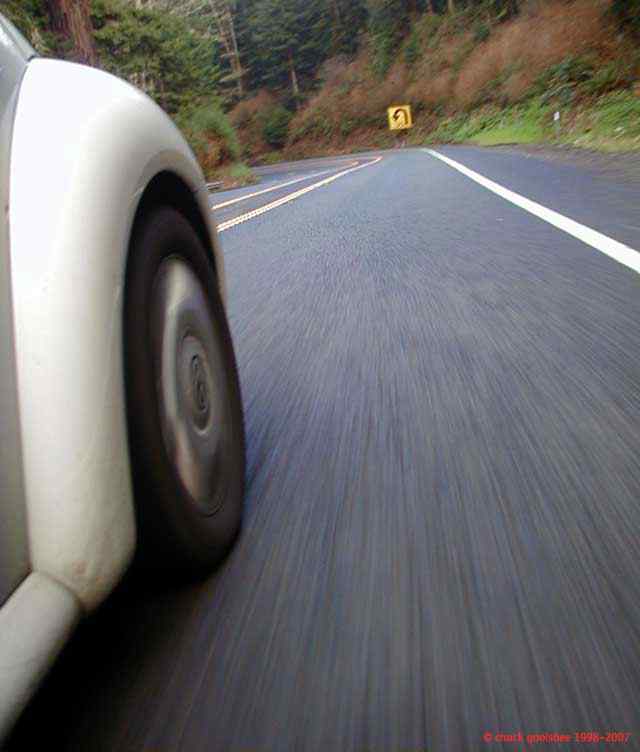
3. Go back and read #2 again.
It really is that important.

4. If you are going to go REALLY fast, do it alone.
Search out abandoned, lonely roads. Limited access, no intersections, no lights, no traffic, nothing but you, your car, and wide open spaces. If you are near a town, or there are any other cars around SLOW DOWN. Those of us in the western US are lucky, as there are plenty of open, lonely roads out here. Montana, Idaho, Nevada, Utah, etc are crisscrossed by empty Interstates, state highways, and county roads where you can find the space and time to drive.
But what about normal every day driving? Read on…

5. When in traffic on freeway, stay out of the “fast lane” when you can.
I lived in Europe in the mid-90s and really appreciated the fact that Europeans understand and embrace the concept of Lane Discipline. They adhere to the idea that the “fast lane” is for passing only. Trucks stay in the slow lane and NEVER leave it, except to pass another truck. Cars move over when you approach them at a higher rate of speed. Good lane discipline and courtesy does wonders for keeping traffic moving along smoothly. This is how they have unrestricted Autobahns in Germany… because the drivers there know how to drive properly on multi-lane freeways.
Unfortunately I live in America, where the citizens are selfish and self-centered to the point of having NO lane-discipline, or concept of courtesy on the roads, especially while driving on that most American of roads, “the freeway.”
My daily commute consists of a good portion of the main west coast concrete arterial, Interstate 5. I have been driving this stretch of road almost every day for a decade, and I have discovered many things about my fellow Americans along the way. They rarely look in their rearview mirrors. They compulsively avoid the “slow lane.” The majority of them it seems spend their commute time chatting on their cell phones. They are terrified of being alone and congregate in slow-moving herds… “Utah blobs” they are called out in the West… that clog all lanes across the highway at a time, with no lane moving faster than any other. Lanes are important, but their function is merely to provide a space for forward motion, except of course the “slow lane” whose function is merely a merging space for on- and off-ramps.
To anyone familiar with lane discipline, this situation is frustrating as hell. I have literally seen, on many occasions, drivers merge onto a freeway, left turn signal blinking, and immediately traverse all lanes of a multilane freeway and place themselves in the far left, aka “fast lane” and continue on their way. Many of them have done this RIGHT IN FRONT OF ME, while I was travelling ~10 MPH faster than them, forcing me to “undertake” them, by passing on the inside. The simple fact is, Americans are poor drivers.
American drivers make easy prey for the revenue collectors of the nation’s highways though. Cops rely on the fact that the average American driver doesn’t pay that much attention. They also pick the “low hanging fruit”… meaning drivers in the “fast lane.” I usually see the State Patrol’s speed traps set up in the inside median cross-overs, or if being run by motorcycle cops, leisurely sitting on the jersey barriers… almost invisible. The State Patrol around here use optical SMDs (aka “laser”) and optical SMDs are “line of sight” devices. The cop has to be looking right at you through his SMD to measure you. He is aiming a beam at you and his device is reading the reflected light. As such they really need to be STRAIGHT AHEAD of you. This limits their ability to measure much beyond a single lane. If you are NOT in the lane he’s patrolling, then you are safe from detection. I have rolled through speed traps on I-5 going 90 MPH. The key was that I was in the right hand lane and they were focussed, like a laser, on the left hand lane. The exception for this is overpasses and/or hills/curves. This is where paying attention pays off. Scan ahead.
Let them catch the unaware.

6. Get a “Rabbit”
A tried and true method that does wonders. If somebody is driving like a bat out of hell, take advantage of them. I love doing this on long-distance cruises. Find somebody going real fast and fall in about a an eighth to a quarter mile behind them. Close enough to see them and stay on pace, but far enough to let them be the only one caught should Smokey be on patrol. This is where your radar detector can REALLY pay off. You can roll with confidence and it will alert you when they get tagged. I have personally had at least a dozen “rabbits” take the fall for me over the years.
The best rabbits are “boy racers” with big wings and bad judgement (redundant, I know.) If you can find one of those, you’re set! They are easy to trick into rabbit duty too. 😉
Finally, there are always “rabbits” out there, that may not even be driving fast. Remember up above in the “pay attention” segment, I noted that you need to be observant of traffic way ahead of you. People REFLEXIVELY tap their brakes when they see a cop doing speed patrol. Keep an eye on the traffic a quarter-mile ahead of you. When EVERYONE on the freeway semaphores with their brake lights at or around the same spot, chances are Smokey is waiting for you up ahead.

7. Learn to properly modulate
Spend some time getting to know your car and how it performs. Learn to shed speed efficiently. Know how to drop from any speed to within 5mph of the speed limit with minimal effort and drama.
If you are speeding, and you see a cop, you want to lose speed fast, but without tearing up asphalt with your car’s front bumper. Tire smoke is a dead giveaway. If you can shed speed before he has a chance to get an accurate measure of it, you are halfway there to beating the rap.
Practice makes perfect, and awareness pays off.
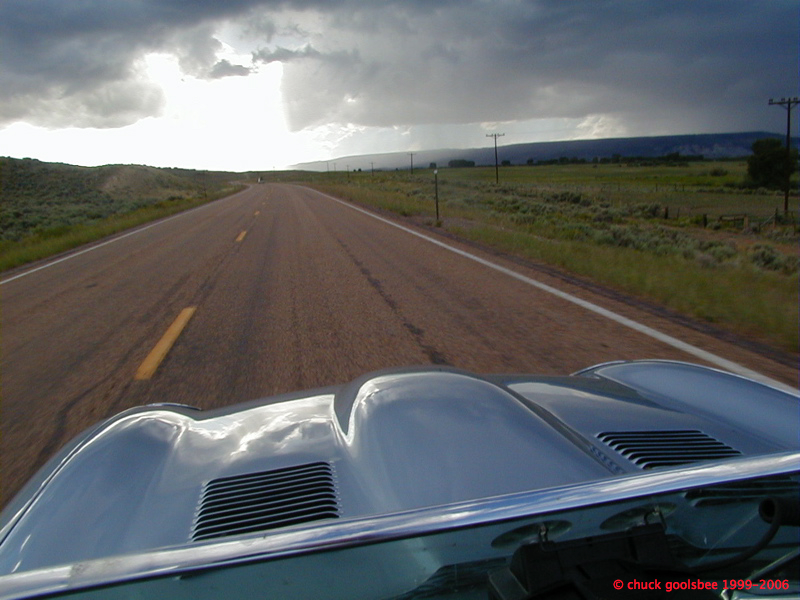
8. Be aware of context!
Weather can make safe roads dangerous. Stopping and braking are harder on wet or slippery surfaces. Use your friggin brain and don’t speed in bad conditions. If it is snowing or there is snow & ice on the roadway, I drive VERY conservatively. Snow is not the time for speeding!
I only drive fast in cars. I have an old pickup truck that transforms me into a grandfather with regards to my driving. It has a high center of gravity and handling like… well a truck. It was built for utility, NOT speed. My wife has a Jeep Liberty. When I drive it I rarely go much beyond the speed limit. This is also a vehicle not designed to go fast. If I’m going fast I want a car that handles well at speed. High CoG kills handling at speed. It might kill you. Don’t speed in an SUV.
Note to Americans: Four wheel drive does NOTHING to improve stopping distances on a slippery surface. Nor does it make you invincible. Having power applied to all your wheels does not mean you can drive like an idiot at high speed on snow.

9. Make a dull catch
Part of the dynamic of the predator/prey relationship is the value of the prey to the predator. Now think back to high school and those guys you knew who wanted to be cops when they grew up… think about their personality and ego. If they were stalking speeders, what would they want to catch? “Red Ferrari” is probably #1 on their mental list of big game to bag, right? See the photo above? Within an hour of me taking that photo we were stopped for speeding by a County Sheriff in rural Colorado. He asked us “what sort of car is this anyway? Is this a Ferrari?” When we replied “It is a Mercedes-Benz sir.” He sent us away with a warning. I bet that would not have happened IF it were a Ferrari!
The car I drive the fastest on a regular basis is my “daily driver”… you will note I have no pictures of it here… not because I am trying to hide it… just that it is dreadfully boring to look at. It is a compact 4-door sedan. Dull and dirty as dishwater. It is also invisible. It is small, underpowered (Diesel!) and not at all sexy. It holds no attraction to police. It honestly holds no attraction for anybody. If you are going to speed, it is best to do it in as nondescript a car as possible.
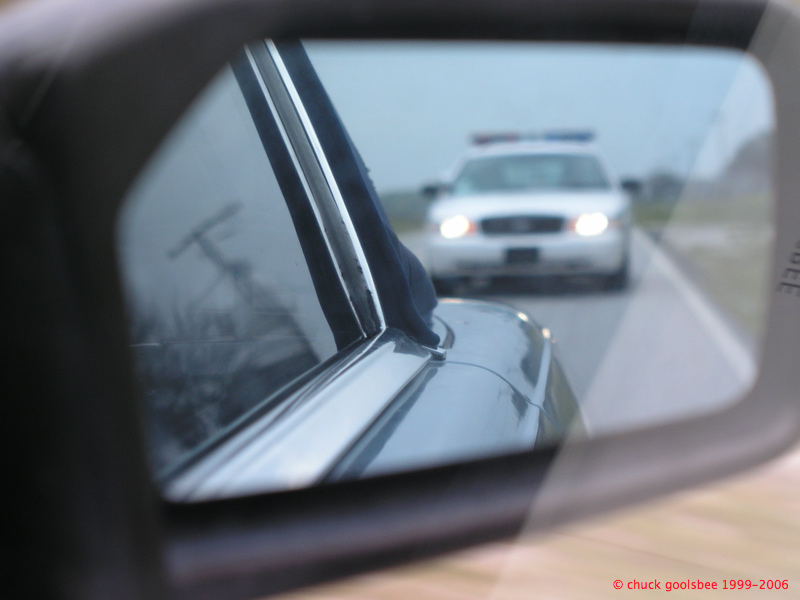
What happens if you DO get caught?
“Getting Caught” is a multi-step process, I’ll start at the beginning:
1. Detection
In order to catch you, they have to detect two things: Your presence & your speed. If they are using a optical SMD they have to have DIRECT line of sight. If they are using a radio-frequency SMD they need to be able to pick you from surrounding traffic. If they are moving the opposite direction, it is even harder. If they are using aircraft, they should be easy to see from a long way off as they’ll be slowly circling the area before you get there. You should be able to avoid all of the above by using all my advice above. However, sometimes they are REALLY good. They have good hiding places. They have come up from behind you. They are in unmarked cars and moving along with you. (The State Patrol around here has done things like stationed a cop in the median on a lawn tractor, or patrolled in Volvos and Pickups. They haven’t caught me with these tricks yet though.) Your detector will let you know WHEN you have been detected.
If you have been detected, SLOW DOWN. Use those skills you picked up by practicing #7 in the section above. Shed your speed as much as possible in as undramatic fashion as you can.
I have been detected from hiding places before, and have responded by slowing down. In several cases the officer appeared discretely behind me and paced me for a while before pulling me over. Since I was not going as fast as I was before and he didn’t KNOW that I KNEW I’d been detected, he made the assumption that my speed at the time of detection was unusual. I’m not a mind reader, but I have been sent away with warnings after detection and swift and undramatic behavior modification.
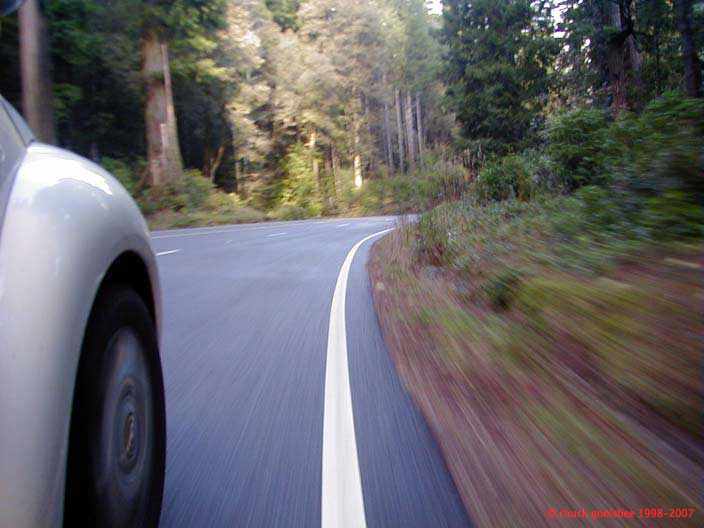
2. Camouflage
I don’t recommend it as a full-time strategy, but if you can “disappear” after detection take advantage of that opportunity. By “disappear” I mean blend in with your surroundings… traffic, like cars, changes of lane or direction, parking lots, exit ramps, whatever. This works best at night, when perception and confusion can work on your side. DO NOT “RUN” but go ahead and hide if you can. Sometimes a slight lane change, trading places with another car, is all it takes. If the cop is right on you, light-bar active, you have no choice but to surrender, but if you have been detected, but he can’t keep an eye right on you from the moment he detects until he has you pulled over, do what you can given the situation. Again, let me repeat DO NOT TRY TO OUTRUN THE POLICE. That is just stupid. But hey, if he can’t find you…
In my adventurous youth I took camouflage to an extreme once, but that is a story for another time.
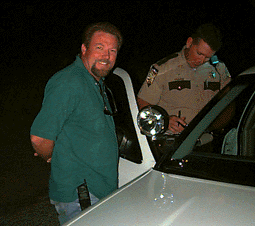
3. The Roadside Stop
Should all the above fail you and they’ve got you, pull over. This is probably the most important advice I can give, and it is the sum-total of all the above wisdom. Pay attention:
Select a SAFE spot for you and the officer to be, out of traffic and potential harm. Despite all I have said above, I have a deep respect for law enforcement officers. Their lives are at risk every day on our behalf, and they have to deal with the worst of what our society has to offer on a continuous basis. Here is your opportunity to make their lives easier. Consider their safety in your actions. Be courteous in speech and action with the officer. Turn off your car, turn on your emergency flashers. Lower your windows and keep your hands visible. Don’t make any sudden moves. Don’t unbuckle your seat belt and start digging out your wallet until asked. Just sit still and wait for him to approach your car. This may take a while as they all have on-board computers and he’s likely “running your plate” to get as much information about you and the car as possible. Be patient.
Remember #2 in the “Don’t Get Caught” section? You should have been paying attention and known exactly what your speed was when your detector went off. You should know your speed at all times, right? Now is the time to put that knowledge to use.
The very first question (besides a request for your lic, registration, and proof of insurance) the officer will likely ask you is “Do you know how fast you were going?” or something exactly like that. In almost every case I respond with the complete, honest truth. I tell them EXACTLY how fast I was travelling when my detector went off.
I essentially confess to my “crime.” My wife is an attorney. In fact, she is a criminal defence attorney. She tells me I’m an idiot for doing this, and that one day it will backfire on me. So far though, it hasn’t.
Ask any cop when you have the chance. They’ll tell you that most of the time, in fact nearly 99% of the time the person will respond with a noncommittal reply. “I don’t know.” “I wasn’t paying attention.” “No sir, I don’t.”
As far as I’m concerned, you might as well say “I’m supposed to be in control of a motor vehicle, but instead I’m oblivious!”
The MOST IMPORTANT aspect of driving is the goddamn driver paying attention to what they are doing! By telling the officer exactly how fast I’m going I am communicating in no uncertain terms that I AM paying attention. I am in control of my motor vehicle, and am aware of my surroundings and my actions.
Let’s be honest, speed limits are the most-often broken law that we have. Just about EVERYBODY has broken speed laws. The fact that there are some places on earth that have unrestricted speed limits confirms that speed laws are arbitrary in nature. A skilled driver, in reasonable conditions, with good judgement, who is paying attention can safely drive at well above the speed limit. The police know this… hell they do it all the time!
In my experience, when you tell the truth like this, and communicate that you will be careful and observe the limit in the future, they send you away with a warning.
Oh yeah… It also helps if you are over the age of 35 or so.

What do you think? What have you experienced?

